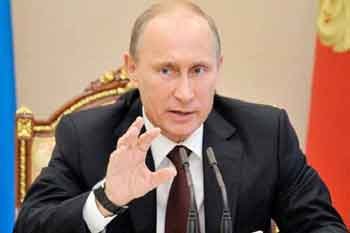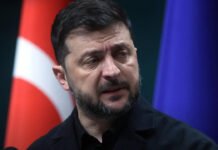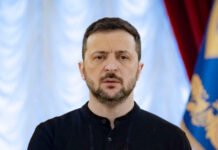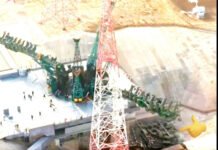Ukraine has dramatically escalated its military tactics, marking a significant shift in the ongoing conflict with Russia. Recent reports highlight that Ukrainian forces penetrated deep into Russian territory, reaching as far as Kursk. Following this bold move, Ukraine launched rapid drone attacks on Moscow, a development that has raised questions about the evolving dynamics of the war.
Largest Drone Attack on Moscow Since the War Began
In what is being described as the most extensive drone assault on Moscow since the onset of the conflict in February 2022, over 11 drones were reportedly spotted in the skies above the Russian capital. The Russian Defense Ministry and local officials confirmed that this attack was unprecedented in scale, further intensifying the already volatile situation between the two nations.
Russia’s Response: A Robust Air Defense System in Action
The Russian government, while acknowledging the scale of the attack, claimed to have successfully neutralized the threat. According to the Russian Defense Ministry, a total of 45 drones were destroyed across various regions within Russian territory. Specifically, 11 of these drones were intercepted over Moscow, with additional drones being taken down in the Bryansk, Belgorod, Kaluga, and Kursk regions.
Moscow’s Resilience: How the Capital Withstood the Attack
Moscow Mayor Sergei Sobyanin provided further details on the defensive measures employed during the attack. He confirmed that some of the drones were destroyed over Podolsk, a city located approximately 38 kilometers south of the Kremlin. Sobyanin emphasized that this was the largest drone attack aimed at Moscow to date, but he also praised the effectiveness of Moscow’s air defense systems in thwarting the enemy UAVs.
The Broader Implications: Is the Russia-Ukraine Conflict Shifting?
This drone assault on Moscow is particularly significant because it represents one of the few times the war has visibly impacted a major Russian city, especially one as populated as Moscow, home to over 21 million people. Traditionally, the conflict has been concentrated in the villages, forests, and fields of eastern Ukraine, making this incursion into the Russian heartland a notable escalation.
Eastern Ukraine: Russia’s Advancing Front and Ukraine’s Counteroffensive
As Russia continues to advance in eastern Ukraine, where it currently occupies approximately 18% of the territory, the drone attacks on Moscow could signal a shift in Ukraine’s strategy. While Russia has made gains in the east, it now faces the challenge of defending its own borders from Ukrainian incursions. The recent drone attack underscores the difficulty Russia faces in securing its vast territory, particularly in regions like Kursk, which have become focal points of Ukrainian counteroffensives.
Historical Context: The Largest Attack on Russian Soil Since World War II
The magnitude of this attack has drawn comparisons to the largest military operations on Russian soil since World War II. This comparison highlights the scale and intensity of the current conflict, underscoring the high stakes involved for both nations. For Russia, the ability to defend its territory from Ukrainian aggression is now a critical priority, while for Ukraine, these attacks represent a bold attempt to disrupt Russian military operations and assert its resilience in the face of ongoing aggression.
A Potential Turning Point in the Conflict
The recent drone attacks on Moscow mark a potential turning point in the Russia-Ukraine war. As Ukraine adopts more aggressive tactics, the conflict appears to be entering a new phase, one that could see more direct attacks on Russian territory. While Russia’s air defenses have proven effective so far, the persistence of these attacks could test the limits of its defensive capabilities and alter the course of the war. The coming weeks will likely reveal whether this represents a temporary escalation or the beginning of a broader shift in the conflict’s dynamics.
















